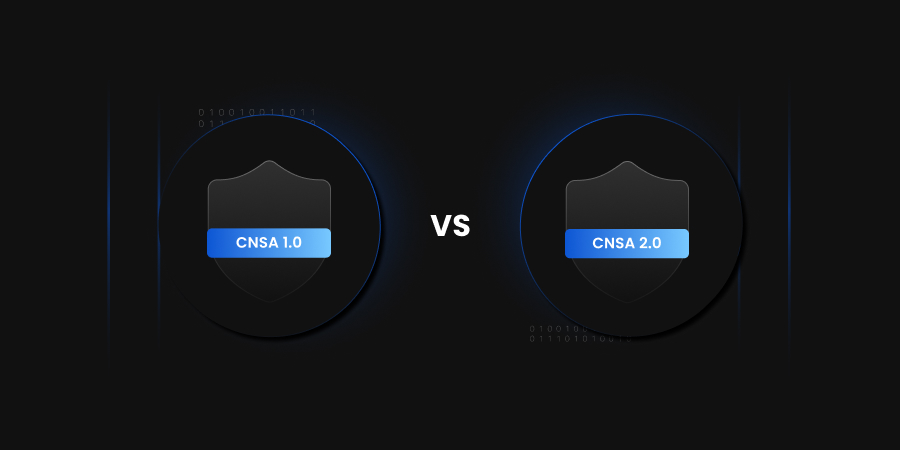Code signing certificates play a major role in proving the authenticity and integrity of software applications within and outside an organization. It provides a crucial line of defense and assures users and developers about the application they can trust. Once an application is signed, no malicious party can inject malware or other offensive measures as code signing provides integrity to the original application.
However, disasters cannot be nullified. Certificates can be compromised and stolen, and some bad actor can take control of it. The consequences of such a compromise can be diverse, which can present a host of risks and challenges that an organization and the users of the application will face.
Understanding Code Signing Certificates
Before delving into the risks associated with compromised code signing certificates, it’s important to grasp the role of code signing certificates in data protection. Code signing certificates serve as digital signatures, verifying the source and integrity of software code. When developers sign their code with these certificates, users can trust that the software hasn’t been tampered with or altered by malicious entities.
The Risks of Compromised Certificates
-
Malware Distribution
Perhaps the most immediate risk of compromised code signing certificates is the potential for malware distribution. Attackers who gain access to legitimate certificates can sign malicious codes, effectively bypassing security measures and gaining users’ trust. This can lead to the widespread dissemination of malware, causing significant damage to individuals and organizations.
-
Phishing Attacks
Compromised code signing certificates can also facilitate sophisticated phishing attacks. By signing phishing emails or fraudulent websites with legitimate certificates, attackers can deceive users into believing that the content is trustworthy. This increases the likelihood of successful phishing attempts, as unsuspecting individuals may be more inclined to divulge sensitive information.
-
Exploitation of Trusted Relationships
Code signing certificates are built on trust. When these certificates are compromised, it undermines the trust relationship between software developers and users. Malicious actors can exploit this breach of trust to execute various attacks, leveraging the credibility associated with legitimate certificates to infiltrate systems and networks undetected.
-
Damage to Reputation
For organizations whose code signing certificates are compromised, the damage extends beyond immediate security concerns. A breach of this nature can tarnish their reputation, eroding trust among customers, partners, and stakeholders. Rebuilding trust and restoring confidence in their products and services can be a long and arduous process.
Challenges in Mitigating Compromised Certificates
Addressing the risks posed by compromised code signing certificates presents several challenges:
-
Detection and Remediation
Identifying compromised certificates amidst the vast sea of digital signatures can be like finding a needle in a haystack. Organizations must invest in robust security measures and monitoring tools capable of detecting unauthorized use of certificates promptly.
-
Certificate Lifecycle Management
Managing the lifecycle of code signing certificates is essential for preventing compromises. This includes proper issuance, renewal, and revocation procedures. However, maintaining oversight of numerous certificates across diverse environments can be complex and resource intensive.
-
Regulatory Compliance
Compliance with regulatory frameworks such as the Payment Card Industry Data Security Standard (PCI DSS) or the General Data Protection Regulation (GDPR) adds another layer of complexity to certificate management. Organizations must ensure that their practices align with relevant regulations to avoid penalties and legal repercussions.
Recommendations and Best Practices
-
Implement Multi-factor Authentication (MFA)
Enforce multi-factor authentication for accessing code signing certificate management systems. This adds an extra layer of security, making it harder for unauthorized individuals to gain access to sensitive resources.
-
Regularly Rotate Certificates
Implement a regular rotation policy for code signing certificates. By regularly replacing certificates with new ones, organizations can limit the window of opportunity for attackers to exploit compromised certificates.
-
Monitor Certificate Usage
Utilize monitoring tools to track the usage of code signing certificates across your organization’s infrastructure. This includes monitoring certificate issuance, revocation, and any unusual or unauthorized activity associated with certificate usage.
-
Encrypt Certificate Storage
Store code signing certificates in encrypted repositories or hardware security modules (HSMs) to protect them from unauthorized access. Encryption adds an additional layer of security, ensuring that even if certificates are compromised, they remain inaccessible to attackers.
-
Establish Certificate Revocation Policies
Define clear procedures for revoking compromised certificates promptly. Ensure that all stakeholders are aware of these policies and understand their role in initiating certificate revocation when necessary.
-
Segment Certificate Access
Limit access to code signing certificates based on the principle of least privilege. Only grant access to individuals who require it for their specific roles and responsibilities, and regularly review and update access permissions as needed.
-
Regular Security Audits and Penetration Testing
Conduct regular security audits and penetration testing to identify vulnerabilities in your code signing certificate management systems and infrastructure. Address any identified weaknesses promptly to mitigate potential risks.
-
Stay Informed About Threats and Vulnerabilities
Stay abreast of emerging threats and vulnerabilities related to code signing certificates and update security practices accordingly. Engage with industry forums, attend security conferences, and leverage threat intelligence sources to stay informed about the latest trends and developments.
-
Train and Educate Stakeholders
Provide comprehensive training and awareness programs for developers, IT administrators, and end-users on the importance of code signing certificate security and best practices for safeguarding them. Foster a culture of security awareness within your organization.
-
Consider Certificate Transparency (CT)
Implement Certificate Transparency (CT) logs to enhance transparency and visibility into certificate issuance and usage. CT logs provide an additional layer of assurance by allowing organizations to monitor and audit certificate activity more effectively.
Conclusion
Compromised code signing certificates pose a significant threat to the integrity and security of development ecosystems. The risks range from malware distribution and phishing attacks to reputational damage and regulatory non-compliance. Addressing these risks requires a multi-faceted approach encompassing robust security measures, proactive monitoring, and ongoing education and awareness efforts.
Encryption Consulting’s CodeSign Secure is designed to align with industry standards and best practices for code signing security. As global cyber threats continue to evolve, organizations must remain vigilant in safeguarding their code-signing certificates and upholding the trust of their users. CodeSign Secure provides features like multi-factor authentication and role-based access to ensure that only authorized individuals can access and use certificates. It allows for modifications to the status of a key, marking it as active or inactive, which controls the signing capabilities of the associated certificate.
Every code signing certificate has a validity period and uses timestamping when a code is signed, strengthening the certificate’s authenticity. All the keys generated by CodeSign Secure are created and stored in tamper-proof HSMs to ensure a high level of security. It also allows for auditing and monitoring reports that will help your organization keep track of every certificate’s usage. By staying informed, implementing best practices, and fostering a culture of security, we can mitigate the risks posed by compromised certificates and uphold your organization’s integrity.




